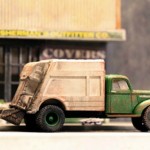“The people stood almost breathless, overwhelmed with awe, as if in the presence of the supernatural…The strange, weird light, exceeded in power only by the sun, rendered the square as light as midday. Men fell on their knees, groans were uttered at the sight and many were dumb with amazement….It drove the darkness back and out of the entire city of Wabash so that now the people could see to read on nearly all of the city’s streets by night.”
Journalists could not come up with enough awestruck prose to describe a technological first occurring on the evening of March 31, 1880 in the north-central Indiana city of Wabash. Although a demonstration had been conducted in Cleveland the year before, Wabash may lay claim to the title of the first city to have been wholly lit by electric light. The Wabash Common Council had voted the previous month to allow the Brush Electric Light Company to hang its patented arc-lamps from the city’s Courthouse dome. The 3,000 candlepower light—200 times brighter than a contemporary filament lamp—was the brain-child of Charles Brush, a Cleveland native.
Invented in 1876, the arc-lamp’s continuous, self-regulating dynamo-powered glow was quickly judged to be superior to the existing technology—a device known as a Yablochkov candle. After the dazzling debut of Brush’s innovation, the city of Wabash permanently installed four arc-lamps, along with a power source—a small generator harnessed to a threshing machine engine.
The use of the arc-lamp for general street lighting in Wabash resulted in the development of “Brush plants,” or central municipal power stations, in cities around the country and the world. The Brush company was eventually acquired by its competitor, Thomson-Houston, which merged with Edison to become General Electric in 1891.






















